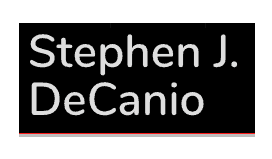30 Jun Information Processing and Organizational Structure
“Information Processing and Organizational Structure” (with William E. Watkins) Journal of Economic Behavior and Organization 36, 1998
Abstract
Standard economic theories of the firm (and other organizations) stress profit maximization as the foundation for derivation of predictable behavior. Yet statistical and case-study evidence continues to accumulate that real firms do not act as required by the neoclassical framework. Instead of being represented by ever more elaborate maximization models, the firm can be modeled simply as a network of information-processing agents. The actions of the firm are then a function only of the network structure and the information-processing capabilities of the agents. This approach can be used to explain a number of features of organizational behavior, including the process of technological diffusion. It also suggests that derivation of the optimal organizational structure may be computationally complex, with a number of implications for economic theory and policy development.


Sorry, the comment form is closed at this time.